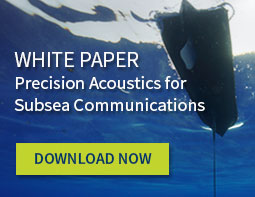Secret to Mission Success: Operational Risk Assessment Simulation
Liquid Robotics — October 16, 2018
Operating missions across the unpredictable ocean is difficult at best. Many of you know first-hand the complexities, the dangers and the amount of planning required for a successful mission.
Assessing the potential risks across all the planning considerations such as mission route and duration, sensor payload support, navigation hazards, platform and power usage, and vessel traffic, takes talent, expertise and the right tools.
This brings us to one really cool service that our pros in Mission Services offer for every mission: the operational risk assessment. In an operational risk assessment, we simulate the customer’s exact mission to determine the likelihood of success and expected challenges. Then we tailor the mission plan to mitigate those risks. The simulations take into consideration:
- Mission details, including objectives, locations, and data requirements
- 25 years of historical data – from regional and global models, including surface currents, waves, wind, temperatures, and sea ice
- Wave Glider data from extensive performance characterization in various sea states, configurations, and solar power generation modeling
The simulations then produce a scorecard ranking the risks from nominal to high risk. The mission plan is then adjusted, and simulations are repeated until an acceptable mitigation plan is reached and agreed upon by all the stakeholders. The overall goal is to maximize the likelihood of mission success.

Operational risk assessment sample scorecard
The simulations then produce a scorecard ranking the risks from nominal to high risk. The mission plan is then adjusted, and simulations are repeated until an acceptable mitigation plan is reached and agreed upon by all the stakeholders. The overall goal is to maximize the likelihood of mission success.
Unmanned Warrior 2016
A great example of this service in action was the operational risk assessment work done for Unmanned Warrior 2016, the British Royal Navy’s large scale demonstration of unmanned and autonomous systems. For over six weeks, industry, allied nations, academia and the Royal Navy conducted live exercises to test the capabilities of over 50 manned and unmanned systems working in concert on anti-submarine warfare (ASW); intelligence, surveillance, and reconnaissance (ISR); and maritime domain awareness (MDA) tasks. The goal was to explore the feasibility of increasing the use of unmanned and autonomous systems in delivering maritime capability.
To prepare for this important exercise, Boeing and Liquid Robotics conducted extensive operational risk simulations to evaluate the risks for:
- Severe and unpredictable weather off the coasts of West Wales and Scotland’s Outer Hebrides
- Navigation authority to account for the local vessel operators and the large number of Unmanned Warrior surface and subsea systems
- Power usage plan to fit limited availability of solar power
- Bathymetry analysis to plan for the 40m minimum range depth
During Unmanned Warrior we operated multiple Wave Gliders for ASW detection and indeed, accomplished the first detection of a live diesel submarine by a fleet of unmanned surface vehicles! Additionally, we supported the Royal Navy’s situational awareness for weather, currents and other environmental monitoring for the entire Unmanned Warrior operation.
As a result of using our operational risk assessment tools and conducting many simulations, we were able to tailor the mission plan to mitigate the risks. A huge benefit especially considering the complexities involved in this first of its kind multi-national demonstration.
Learn more about how operational risk assessments and other Mission Services can help you ensure mission success.
